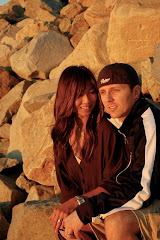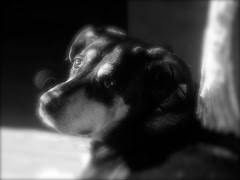Back to work after the all-to-short weekend...
Today's instruction was a bit more exciting than the epic lecture day we endured on Saturday. Today was all play. In the morning, we took the knowledge we learned in the classroom and applied it during live, simulated scenarios.

(This is our manikin to work on)
There were four stations set up, with a dummy patient in each one. We donned our full battle rattle and had our medic bags with us as they turned out the lights, pumped smoke into the rooms and turned on siren and gun blast noises to distract us. The idea was to simulate an actual combat zone. Once the instructors were ready, we were asked to go to our individual stations and assess our patients.
This is a bit different than BLS (Basic Life Support) or ACLS (Advanced Cardiopulmonary Life Support) for those whole have done this. While we consider the ABC's (Airway, Breathing, Circulation) of emergencies, what they teach in the military is to first secure the area. Securing the area means returning gunfire as necessary and or protecting yourself prior to helping the soldier. Secondly, arterial bleeding (typically from amputations) has shown to be the number one killer to those injured and therefore, we are to apply tourniquets where necessary prior to moving the patient or even treating the airway. Next, we move the patient to a secure location. Now comes the airway. Finally, more familiar territory. I even had a chance to teach a little during this lecture on the Saturday course. During this assessment, we check breathing and do one of three basic maneuvers: place a "nasal pharyngeal airway" (NPA) into the nose of a unconscious or semi-unconscious patient to relieve any obstruction; place a "combi-tube" (easily placed tube into the trachea or esophagus used to breath for someone) into the airway, if the NPA isn't working; or do an emergency cricothyrotomy. For those who don't know what that last long word is; a cricothyrotomy is a procedure for placing a breathing tube into the trachea ("windpipe") at the level of the "Adam's Apple". The reason being, we can't gain access to the throat via the mouth due to an obstruction of some kind. This is somewhat gruesome for the faint of heart, as we use a scalpel to cut into the throat and shove the tube in...eeewwww. Just kidding...I mean about the "eeewwww" part.

(This is our instructor)
Well, once the airway is secured our next step is to check out the body for other wounds. The third leading cause of death in the field of battle is a wound to the chest. This can cause a pneumothorax or tension pneumothorax (air filling one side of the chest cavity between the lung and the chest wall). This will collapse the lung making it difficult to breath and possibly inhibit blood flow to and through the heart if the pressure builds too high. Bad stuff. We address this by putting a plastic cover over the wound to keep air from getting into the chest causing the pressure to rise. Unfortunately, the air in the chest cavity can build up and we need to relieve that pressure with a needle placed through the chest to let out the air...placed about 3 inches below your collar bone and above your nipple..."Is it a bit nipply in here..." Clark W. Griswold, Christmas Vacation. Finally, we place an IV and keep the patients warm until help arrives to transport them to a medical facility. For testing purposes, this whole process had to be accomplished in less than 15 minutes...no problem.
(This room was at least this smoky and almost pitch black.)





No comments:
Post a Comment